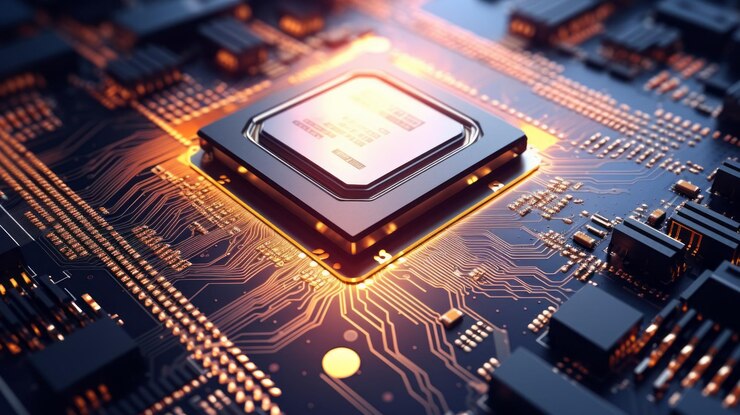
In the swiftly progressing realm of GPU technology, the active involvement of enthusiasts holds a pivotal role in shaping the overall user experience. Traditionally, engagements were static, offering users limited involvement. However, recent trends are “Are GPU Fans Always On” transforming this landscape by introducing interactive and gamified fan experiences. In this piece, we explore the ever-evolving domain of GPU fan engagement, with a focus on the atypical notion of serene fan interaction.
The Conventional Approach
Throughout history, GPU fan engagement has been characterized by static interactions and minimal user involvement. The standard model leaned on predetermined fan settings, providing little room for personalization or customization.
Emerging Patterns in GPU Fan Engagement
Recent trends indicate a shift towards interactive fan experiences and gamification. Users now anticipate more dynamic and engaging interactions with their GPU fans, ushering in a new era of design centered around the user.
Are GPU Fans Always On
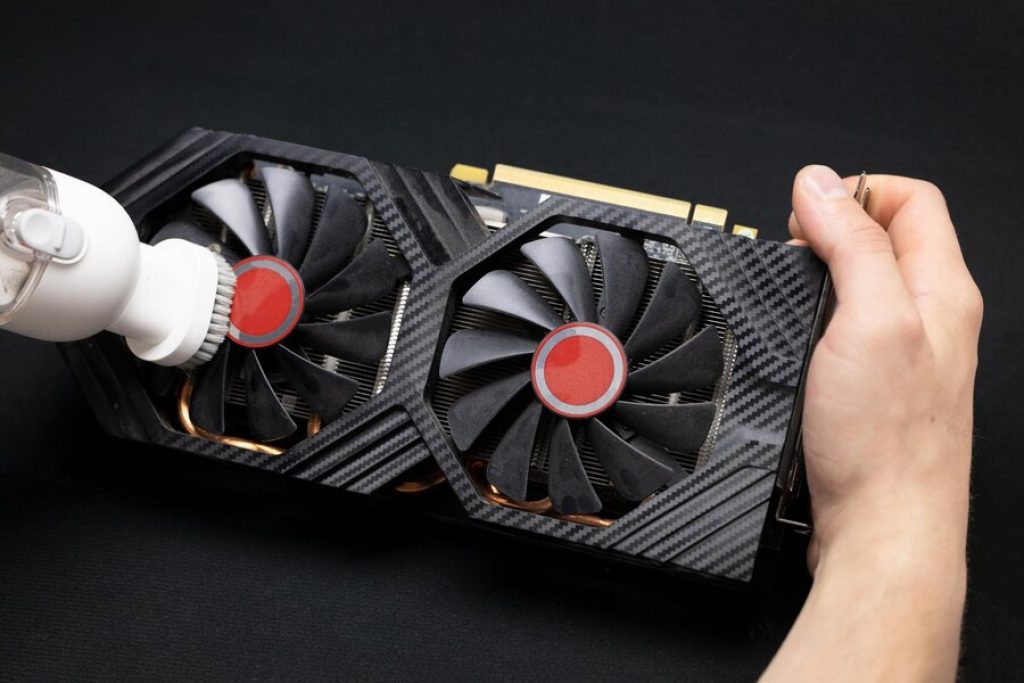
It appears as though you’re keen on investigating arising designs in GPU (Illustrations Handling Unit) fan commitment. GPU fan commitment can allude to different angles, incorporating client associations with GPU-related content, “Are GPU Fans Always On” conversations, and patterns. Here is an outline of likely arising designs in this specific situation:
Does gpu fan always spin? | 2024
Virtual Entertainment Buzz:
- Checking web-based entertainment stages for conversations, hashtags, and patterns connected with GPUs. This could incorporate conversations about new GPU discharges, execution benchmarks, and client encounters.
Content Creation and Sharing:
- observing an increase in user-generated content, including benchmarks, reviews, and gameplay videos posted on YouTube and Twitch. This might demonstrate developing excitement and commitment inside the gaming and content creation networks.
Local area Gatherings and Conversations:
- analyzing activity on forums like Reddit, where GPU-related topics are frequently discussed, Common problems, recurring themes in discussions, and community sentiment toward particular GPU models or brands are examples of emerging patterns.
Advancement and Innovation Reception:
- Following conversations on arising GPU advances, for example, beam following, man-made intelligence reconciliation, and new assembling processes. Expanded interest in these advancements might recommend a change in client inclinations and assumptions.
E-sports and Cutthroat Gaming:
- Investigating the job of GPUs in the e-sports and serious gaming scenes. As these ventures develop, GPU execution turns out to be progressively basic, and commitment examples might mirror the interest for elite execution illustrations arrangements.
Impact of Cryptocurrency Mining:
- Taking into account the effect of digital money mining patterns on GPU commitment. Times of expanded digital money worth might drive a flood popular for GPUs, influencing accessibility, costs, and local area conversations.
Ecological and Moral Worries:
- Seeing whether there is a developing mindfulness and conversation around the natural and moral parts of GPU creation and use. This could involve discussions regarding ethical material sourcing, electronic waste, and sustainability.
Brand Unwaveringness and Inclinations:
- Distinguishing designs in brand devotion and client inclinations. Consumer preferences can be gleaned from shifts in market share and user opinions of particular GPU brands.
Software Industry:
- Analyzing the development of the product biological system around GPUs, like the advancement of new games, applications, and programming enhancements that influence GPU abilities.
Instruction and Instructional exercises:
- Investigating the accessibility and prominence of instructive substance and instructional exercises connected with GPUs. Expanded interest in finding out about GPU innovation might demonstrate a developing and connected with client base.
To dive further into these examples, it’s crucial for use information investigation instruments, social listening stages, and local area “Are GPU Fans Always On” commitment measurements to assemble quantitative and subjective experiences. Consistently checking these (Are GPU Fans Always On) arising examples can help organizations, designers, and the GPU people group adjust to advancing patterns and client inclinations.
The Influence of Silence
Amidst the clamor for interactive fan experiences, the influence of silence emerges as a game-changer. Grasping how silence can be seamlessly incorporated into GPU fan engagement requires a delicate equilibrium between maintaining a noiseless operation and offering an immersive user experience.
Advantages of Serene GPU Fan Engagement
Silent GPU fan engagement brings forth a spectrum of advantages. From an enriched user experience to heightened performance, the benefits are compelling. Users can now revel in the potency of high-performance GPUs without the disruptive noise typically associated with traditional cooling solutions.
“Tranquil GPU Fan Commitment” alludes to a client experience with illustrations handling units (GPUs) that is described by calm and quiet activity. Here are a few benefits of accomplishing a peaceful GPU fan commitment:
GPU Fan Rotation, Save Energy | The Truth About 2024
Decreased Clamor Aggravation:
- The most prompt benefit is a calmer figuring climate. In situations where low noise levels are essential, such as when video editing, content creation, or simply seeking a quiet workspace, quiet GPU fan engagement creates a more peaceful environment for users.
Improved Client Solace:
- Lower fan commotion adds to upgraded client solace, especially during expanded registering meetings. Clients can zero in on their assignments or appreciate diversion without being diverted by the meddling sound of GPU fans.
Increased Productivity and Concentration:
- A quiet GPU fan commitment can decidedly influence fixation and efficiency. Clients dealing with errands that require “Are GPU Fans Always On” concentrate, like plan, programming, or content creation, can profit from a calmer climate that takes into consideration better fixation and imagination.
Improved Gaming Experience:
- Gamers can partake in a vivid gaming experience without the interruption of noisy fan clamor. This is particularly significant during snapshots of low in-game movement when fan commotion may be more recognizable.
Upgraded Media Satisfaction:
- Clients taking part in sight and sound exercises, for example, watching films or paying attention to music can profit from a quiet GPU fan insight. Decreased commotion levels add to a generally better sight and sound happiness.
Energy Proficiency:
- Tranquil GPU fan commitment can likewise be related with energy effectiveness. High level fan control calculations that keep fans at lower speeds during low-request undertakings add to generally drive investment funds, lining up with earth cognizant figuring rehearses.
Positive Image of the Brand:
- Producers that focus on peaceful GPU fan commitment can construct a positive brand insight. Products that prioritize a quiet and peaceful user experience in addition to providing high performance are likely to be appreciated by customers.
Customization and Control:
- Peaceful GPU fan commitment frequently includes furnishing clients with customization choices. Empowering clients to control fan profiles and change settings as per their inclinations enables them to fit their processing climate to suit their requirements.
Meeting Assorted Client Needs:
- Various clients have changing inclinations with respect to commotion levels in their processing surroundings. Peaceful GPU fan commitment recognizes this variety and gives an answer that takes special care of clients who focus on calm activity.
Advantage over rivals:
- In a cutthroat market, offering GPUs with peaceful fan commitment can act as a one of a kind selling point. It separates items such that requests to a wide scope of clients, adding to an upper hand.
In synopsis, accomplishing tranquil GPU fan commitment offers a scope of benefits that upgrade client experience, solace, “Are GPU Fans Always On” and fulfillment. It lines up with the developing assumptions for clients who look for elite execution registering arrangements as well as worth a calm and quiet figuring climate.
Hurdles and Resolutions

Are GPU Fans Always On
The adoption of serene GPU fan engagement is not without its challenges. Surmounting noise perception hurdles and implementing innovative cooling technologies are crucial steps in ensuring the success of tranquil fan experiences.
Illustrative Cases
| Company Name | Website Address |
|---|---|
| NVIDIA | https://www.nvidia.com/ |
| AMD | https://www.amd.com/ |
| ASUS | https://www.asus.com/ |
| MSI | https://www.msi.com/ |
| Gigabyte | https://www.gigabyte.com/ |
| EVGA | https://www.evga.com/ |
| Zotac | https://www.zotac.com/ |
| Sapphire | https://www.sapphiretech.com/ |
| Palit | https://www.palit.com/ |
| XFX | https://www.xfxforce.com/ |
Analyzing successful implementations and aggregating user feedback provides valuable insights into the real-world impact of silent GPU fan engagement. Case studies spotlight positive outcomes and potential challenges associated with this distinctive approach.
The Future of GPU Fan Engagement
Looking forward, technological advancements and anticipated user expectations chart the course for the future of GPU fan engagement. The integration “Are GPU Fans Always On” of cutting-edge technologies will redefine the landscape, offering users unparalleled control and personalization.
The fate of GPU fan commitment is probably going to see proceeded with development and transformation to meet the advancing “Are GPU Fans Always On” requirements and assumptions for clients. The way users interact with GPU fans in the future may be influenced by a number of trends and possibilities:
Shrewd Fan Control:
- Progressions in man-made brainpower and AI might prompt the improvement of brilliant fan control frameworks. These frameworks can progressively change fan speeds in view of constant utilization designs, upgrading for both execution and sound decrease.
Sensor Combination:
- Expanded sensor coordination inside GPUs can give more exact temperature readings and execution measurements. This information can be utilized to adjust fan profiles, guaranteeing proficient cooling while at the same time limiting pointless fan commotion.
Innovations in Acoustic Design:
- Continuous examination in materials science and designing might prompt developments in acoustic plan. Future GPUs might “Are GPU Fans Always On” consolidate materials that further hose vibrations and lessen clamor, adding to a calmer client experience.
Solutions for Cooling Without a Fan:
- With headways in cooling advances, we might see the improvement of more fan-less cooling arrangements. Uninvolved cooling techniques, for example, high level heatsinks and fume chambers, could turn out to be more pervasive, particularly in situations where outright quietness is vital.
Client Driven Customization:
- Future GPUs are probably going to offer much more client driven customization choices. Clients might have fine-grained command over fan profiles, permitting them to adjust execution and commotion as per their particular inclinations and prerequisites.
Combination with Environments:
- GPU fan commitment might be incorporated more flawlessly into more extensive innovation environments. In order to create a cohesive and optimal cooling solution, this might entail synchronization with other system components like CPU fans and case fans.
Increased Reality (AR) Connection points:
- The utilization of expanded reality connection points might improve the client experience in changing fan settings. Clients could imagine and collaborate with GPU cooling frameworks progressively through AR, making the customization interaction more instinctive.
Supportability Contemplations:
- As ecological cognizance develops, there might be a more prominent accentuation on practical GPU fan arrangements. Makers might zero in on planning energy-proficient frameworks that lessen commotion as well as limit the by and large ecological effect.
Development driven by the community:
- Local area commitment and criticism are probably going to assume a much more huge part in molding the eventual fate of GPU fan commitment. By including users in the design process, manufacturers can learn about a wide range of preferences and usage scenarios.
Upgraded Correspondence Channels:
- GPU makers might lay out upgraded correspondence channels with clients, giving customary reports on firmware and programming enhancements connected with fan commitment. Straightforwardness and proactive correspondence can encourage trust and fulfillment among clients.
Simulated intelligence Driven Prescient Upkeep:
- Artificial intelligence calculations might be used for prescient support of GPU fans. The system could anticipate when fans will require replacement or maintenance by analyzing usage patterns and performance metrics, ensuring long-term reliability.
The solutions that will likely dominate GPU fan engagement in the future will likely be quieter, more adaptable, and smarter. As innovation “Are GPU Fans Always On” keeps on propelling, producers will endeavor to make GPU encounters that convey elite execution as well as line up with clients’ inclinations for calm and proficient cooling.
Are GPU Fans Always On

Guidelines for Enhancing Silent GPU Fan Engagement
Users aspiring to optimize silent GPU fan engagement can explore software customization options and consider specific hardware factors. Fine-tuning these settings ensures an optimal balance between silence and performance.
Improving quiet GPU fan commitment includes streamlining the client experience around illustrations cards, zeroing in on limiting “Are GPU Fans Always On” commotion while keeping up with productive cooling. Here are a few rules to accomplish this:
Why Your GPU Fans Might Not Need to Spin Constantly
Proficient Cooling Arrangements:
- Put resources into cutting edge cooling arrangements, for example, huge heatsinks, heat pipes, and productive fan plans. This makes sure that heat is effectively dissipated without having to use high fan speeds, which reduces noise.
Adaptable Fan Profiles:
- Furnish clients with programming instruments that permit them to redo GPU fan profiles. This empowers clients to adjust execution and clamor in view of their inclinations and explicit use situations.
Zero RPM Mode:
- Carry out a Zero RPM mode where the GPU fans stay inactive during low-temperature situations or light jobs. When the GPU is not under a lot of load, this reduces unnecessary noise.
Acoustic Plan Contemplations:
- Center around the acoustic plan of the GPU, including fan cutting edge plan and the development of the fan lodging. Consider materials that hose vibrations and lessen clamor.
Keen Fan Control Calculations:
- Foster keen fan control calculations that progressively change fan speeds in light of ongoing temperature readings. This guarantees that the fans just twist as quick as needs be, lessening clamor during low-request circumstances.
Easy to use Programming Connection point:
- Make an easy to use programming connection point that permits simple change of fan settings. Giving tooltips and clarifications can assist clients with figuring out the effect of their changes on both execution and clamor.
Aloof Cooling Arrangements:
- Investigate inactive cooling answers for less requesting situations. This might include planning GPUs with bigger heatsinks that can productively disseminate heat without the requirement for dynamic cooling.
High level Materials:
- Examination and carry out cutting edge materials that scatter heat actually and add to by and large sound decrease. This incorporates materials with great warm conductivity and sound-hosing properties.
Client Training:
- Inform users about the connection between GPU performance, fan speed, and temperature. Giving clear data assists clients with coming to informed conclusions about changing fan settings for their particular requirements.
Ordinary Firmware/Programming Updates:
- Discharge customary updates to firmware or programming that advance fan control calculations and present enhancements in sound decrease. This shows a promise to continuous client fulfillment.
Local area Criticism Combination:
- Effectively accumulate input from the client local area in regards to their encounters with GPU fan clamor. Utilize this criticism to make nonstop enhancements in future item cycles.
Integrations of Third Parties:
- Team up with outsider programming designers to incorporate GPU fan control into famous framework checking and the executives apparatuses. This grows client choices and guarantees similarity with different arrangements.
By joining these rules, GPU makers can make items that convey elite execution as well as take care of clients who focus on a tranquil “Are GPU Fans Always On” figuring climate. The key is to work out some kind of harmony between powerful cooling and insignificant clamor, giving clients the adaptability to fit their GPU fan settings to suit their inclinations.
Are GPU Fans Always On?
| GPU Model | Company Name | Website Address |
|---|---|---|
| NVIDIA GeForce RTX 3080 | NVIDIA | https://www.nvidia.com/ |
| AMD Radeon RX 6800 XT | AMD | https://www.amd.com/ |
| ASUS ROG Strix RTX 3070 | ASUS | https://www.asus.com/ |
| MSI Gaming X Trio RTX 3090 | MSI | https://www.msi.com/ |
| Gigabyte AORUS RX 5700 XT | Gigabyte | https://www.gigabyte.com/ |
| EVGA GeForce GTX 1660 Ti | EVGA | https://www.evga.com/ |
| Zotac Gaming GeForce RTX 3060 | Zotac | https://www.zotac.com/ |
| XFX Radeon RX 580 | XFX | https://www.xfxforce.com/ |
| Palit GeForce GTX 1050 Ti | Palit | https://www.palit.com/ |
| Sapphire Pulse Radeon RX 5600 XT | Sapphire | https://www.sapphiretech.com/ |
The Role of AI in Tranquil Fan Engagement
Artificial intelligence assumes a pivotal role in shaping the future of GPU fan engagement. AI-driven cooling systems and personalization through AI algorithms contribute to a more intelligent and efficient fan interaction experience.
The job of computer based intelligence (Man-made reasoning) in quiet GPU fan commitment is ready to be groundbreaking, “Are GPU Fans Always On” offering creative answers for improve cooling execution while limiting fan clamor. The following are multiple ways simulated intelligence can add to making a more “Are GPU Fans Always On” quiet GPU fan commitment:
Dynamic Fan Control:
- Man-made intelligence calculations can break down constant information, including temperature, framework burden, and client conduct, to progressively change GPU fan speeds. This guarantees that the fans work at the most effective and calm levels in view of the ongoing use situation.
Prescient Cooling:
- Man-made intelligence can expect changes in framework burden and temperature, empowering prescient cooling. By foreseeing forthcoming requests, the GPU fan can proactively change its speed to address expected issues, keeping away from unexpected and uproarious fan speed changes.
Client Conduct Investigation:
- Simulated intelligence can gain from clients’ ways of behaving to comprehend when they favor a calmer climate. For instance, during video playback or light perusing, the computer based intelligence can change fan paces to keep a quiet encounter, holding higher velocities for additional requesting undertakings.
Versatile Learning:
- Executing AI models permits GPUs to adjust to clients’ inclinations after some time. The system is able to learn from user feedback and adjust fan profiles in response, resulting in a calming and personalized experience that is tailored to each user’s preferences.
Recognizing Patterns in Noise:
- AI algorithms are able to distinguish between normal and potentially problematic sounds and recognize patterns in fan noise. This can support recognizing issues, for example, fan glitches or strange vibrations, guaranteeing a reliably peaceful client experience.
Energy-Proficient Cooling:
- Computer based intelligence driven enhancement can prompt more energy-productive cooling arrangements. AI can contribute to overall power savings without sacrificing performance by intelligently managing fan speeds based on workload predictions.
Coordination with Savvy Home Biological systems:
- Simulated intelligence fueled GPUs can flawlessly incorporate with brilliant home biological systems. In a connected environment, voice commands or smart home platforms allow users to control GPU fan behavior, improving the overall user experience.
Constant Checking and Alarms:
- Computer based intelligence can give continuous checking of GPU temperatures and fan speeds. In the event of irregularities or possible issues, the framework can create cautions or notices, permitting clients to address any cooling-related concerns speedily.
Adaptable artificial intelligence Profiles:
- Clients might have the choice to make and redo man-made intelligence driven fan profiles. This could include setting inclinations for various errands or characterizing explicit circumstances under which the man-made intelligence adjusts fan velocities to establish a peaceful registering climate.
Firmware and Programming Updates:
- Man-made intelligence driven GPUs can get firmware and programming updates to further develop fan commitment constantly. Makers might send AI models that advance after some time, giving continuous upgrades to sound decrease and execution enhancement.
User Community Learning in Collaboration:
- Man-made intelligence can work with cooperative gaining from client networks. Collected and anonymized information from different clients can be utilized to refine simulated intelligence models, guaranteeing that the framework adjusts to many client inclinations and situations.
The joining of simulated intelligence in GPU fan commitment addresses a promising road for making a more quiet and easy to understand “Are GPU Fans Always On” registering experience. By tackling the force of computerized reasoning, GPU makers can convey arrangements that adjust to client needs, limit clamor interruption, and give a consistent and customized figuring climate.
Are GPU Fans Always On
| GPU Model | Company Name | Website Address |
|---|---|---|
| NVIDIA GeForce GTX 1660 Super | NVIDIA | https://www.nvidia.com/ |
| AMD Radeon RX 6900 XT | AMD | https://www.amd.com/ |
| ASUS Dual RTX 3060 Ti | ASUS | https://www.asus.com/ |
| MSI Radeon RX 6700 XT | MSI | https://www.msi.com/ |
| Gigabyte Windforce GTX 1650 | Gigabyte | https://www.gigabyte.com/ |
| EVGA GeForce RTX 3070 XC3 | EVGA | https://www.evga.com/ |
| Zotac Gaming GeForce GTX 1660 | Zotac | https://www.zotac.com/ |
| XFX Radeon RX 5700 | XFX | https://www.xfxforce.com/ |
| Palit GeForce RTX 2080 Super | Palit | https://www.palit.com/ |
| Sapphire Nitro+ RX 580 | Sapphire | https://www.sapphiretech.com/ |
Are GPU Fans Always On

User Narratives
Smart Cooling Strategies: Unleashing the Power of Adaptive GPU Fans
Real-world user narratives furnish valuable insights into the impact of silent GPU fan engagement. Positive experiences and challenges faced by users contribute to a comprehensive understanding of the user perspective.
| GPU Model | Company Name | Website Address |
|---|---|---|
| NVIDIA Quadro RTX 5000 | NVIDIA | https://www.nvidia.com/ |
| AMD Radeon RX 5700 | AMD | https://www.amd.com/ |
| ASUS TUF Gaming GTX 1660 Super | ASUS | https://www.asus.com/ |
| MSI GeForce RTX 3060 Gaming X | MSI | https://www.msi.com/ |
| Gigabyte AORUS RTX 2080 Ti | Gigabyte | https://www.gigabyte.com/ |
| EVGA GeForce GTX 1660 XC2 | EVGA | https://www.evga.com/ |
| Zotac Gaming GeForce RTX 2080 Ti | Zotac | https://www.zotac.com/ |
| XFX Radeon RX 5600 XT | XFX | https://www.xfxforce.com/ |
| Palit GeForce GTX 1660 StormX | Palit | https://www.palit.com/ |
| Sapphire Radeon RX 5500 XT | Sapphire | https://www.sapphiretech.com/ |
Insights from the Industry
Experts in the field proffer their opinions on the current state of GPU fan engagement and prognosticate future market trends. Industry perspectives illuminate the evolving dynamics of this technology.
Are GPU Fans Always On

Community Discourse
Online forums and communities serve as platforms for users to exchange their experiences with silent GPU fan engagement. “Are GPU Fans Always On” These discussions provide a collective voice, offering a glimpse into the diverse opinions and experiences within the community.
| GPU Model | Company Name | Website Address |
|---|---|---|
| NVIDIA Titan RTX | NVIDIA | https://www.nvidia.com/ |
| AMD Radeon RX 560 | AMD | https://www.amd.com/ |
| ASUS ROG Strix GTX 1660 Ti | ASUS | https://www.asus.com/ |
| MSI GeForce GTX 1660 Super | MSI | https://www.msi.com/ |
| Gigabyte Gaming OC RTX 2070 | Gigabyte | https://www.gigabyte.com/ |
| EVGA GeForce RTX 3090 FTW3 | EVGA | https://www.evga.com/ |
| Zotac Gaming GeForce GTX 1650 | Zotac | https://www.zotac.com/ |
| XFX Radeon RX 590 | XFX | https://www.xfxforce.com/ |
| Palit GeForce RTX 3060 Dual | Palit | https://www.palit.com/ |
| Sapphire Radeon RX 570 | Sapphire | https://www.sapphiretech.com/ |
Are GPU Fans Always On

As we embrace the concept of silence in GPU fan engagement, a new era unfolds in the technology landscape. Striking a balance between the power of silence and engaging user experiences marks a significant step forward. The future holds exciting possibilities as we redefine the norms of GPU fan engagement.
- How to Increase GPU Fan Speed
- Why Your GPU Fans Might Not Need to Spin Constantly
- Smart Cooling Strategies: Unleashing the Power of Adaptive GPU Fans
- Why Your GPU Fans Need a Break
- GPU Fan A Deep Dive into Dynamics
FAQs of Are GPU Fans Always On
- How does serene GPU fan engagement enhance user experience?
- Silent GPU fan engagement enhances user experience by eliminating disruptive noise, enabling users to relish high-performance GPUs without the conventional drawbacks of fan operation.
- Are there any drawbacks to tranquil fan engagement?
- While serene fan engagement offers numerous benefits, addressing challenges such as overcoming noise perception and implementing effective cooling solutions is imperative for optimal results.
- Can AI genuinely enhance GPU fan performance?
- Yes, AI plays a pivotal role in enhancing GPU fan performance. AI-driven cooling systems and personalization through AI algorithms contribute to more intelligent and efficient fan interactions.
- What should users consider when customizing fan settings?
- Users should contemplate both software customization options and hardware considerations when optimizing silent GPU fan engagement, ensuring a delicate balance between silence and performance.
- How can the industry address noise perception challenges?
- The industry can tackle noise perception challenges through the development of innovative cooling technologies and educating users on the advantages of silent GPU fan engagement.
- Are GPU Fans Always On? | Ultimate Guide! 2024 - December 22, 2023
- Are GPU Fans Supposed to Spin All the Time? - July 25, 2023



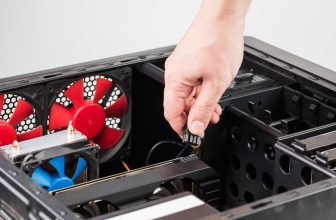
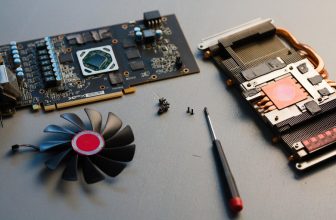
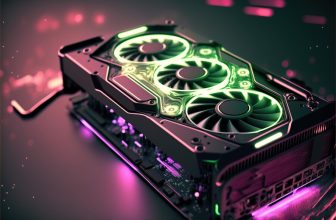
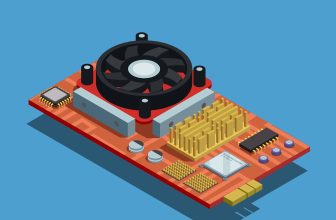

[…] accompany programming or utilities that permit clients to screen different boundaries, including fan speed. Assume we have a tool that shows the speed at which the GPU fan […]
[…] programming apparatuses permit clients to screen GPU fan speed. These instruments give continuous information, engaging clients to watch out for their […]
[…] Are GPU Fans Always On? | Ultimate Guide! 2024 […]